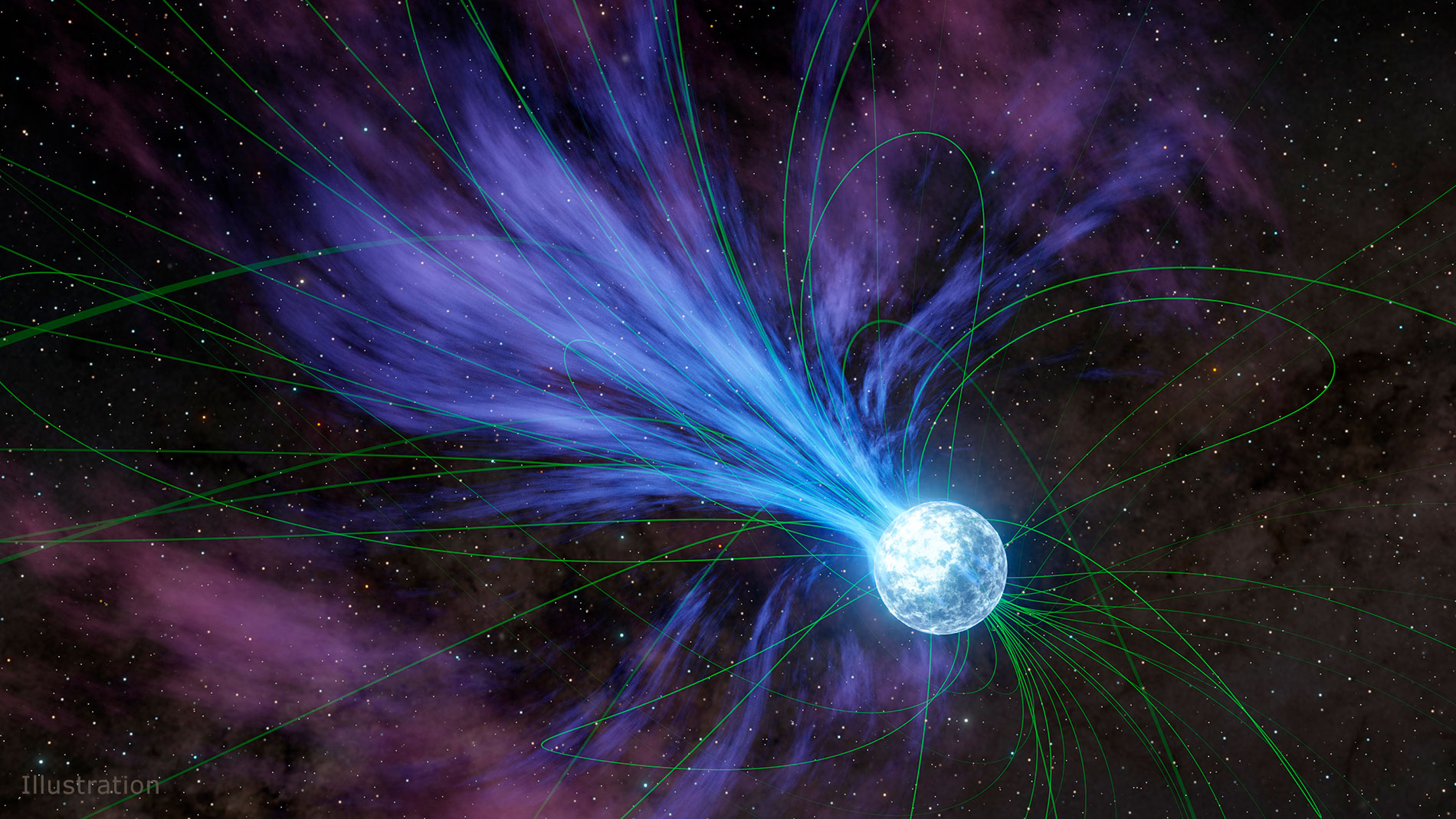‘Quite Unexpected’: LSU Astrophysicist Helps Trace the Origin of the First Gold in the Universe
April 29, 2025

LSU astrophysicist Eric Burns
Nearly everyone has looked up at the night sky and wondered about the mysteries of the universe. LSU astrophysicist Eric Burns says he and his fellow experts are doing that very thing from a scientific perspective, and they recently struck gold.
Burns, assistant professor of Physics & Astronomy in LSU’s College of Science, said the group is studying the origin of elements, which are key to everything from the makeup of the Earth to the formation of life. Heavy elements like gold have been particularly elusive, he said.
However, in a recent breakthrough, the study has confirmed that magnetars, a special class of neutron stars, have produced gold since the death of the first stars, which occurred when the universe was only 1% of its current age. The discovery involved looking back at 20-year-old NASA and European Space Agency data on magnetar flares.
— Video by Grant French
“As Earth undergoes earthquakes, magnetars undergo starquakes. The most powerful of them are called giant flares,” Burns said. “In our recent work, we realized that these events also produce gold, and they have been doing so since the first stars.”
Scientists have known that the collision of two neutron stars can also produce gold, but that source is relatively recent by cosmic standards.
“Thus, we have now found both places where gold can come from and know that it has been around nearly since the beginning,” said Burns, who co-authored the study published in the scientific journal The Astrophysical Journal Letters.

An artist's concept depicts a magnetar – a type of neutron star with a strong magnetic field – losing material into space. Shown as thin green lines, the magnetic field lines influence the movement of charged material around the magnetar.
– NASA/JPL-Caltech
Burns’ Role in the Discovery
Much of Burns' work focuses on gamma-rays, the highest energy form of light. His group is responsible for discovering new magnetar giant flares and is part of a new NASA gamma-ray mission, called COSI, which will study these events in a new way.
A study led by Anirudh Patel, a doctoral student at Columbia University in New York, has been looking at magnetars as production sites of heavy elements for about a year.
“If you produce new elements, you will release gamma-rays due to the nuclear processes. I asked them to work out what the gamma-ray signature would be so we could make sure COSI could look for them,” Burns said.
“When they came back with the signature, we decided to take a look at the giant flares we have observed before, with the most recent in 2004. I found the exact expected signature was seen in that burst.”
In his career, Burns has contributed to several foundational studies in physics, including co-leading a paper that precisely measured the speed of gravity, the last of Albert Einstein’s major predictions to be tested.
He also leads a consortium that studies gamma-ray bursts that observed a gamma-ray burst so bright that it was likely the brightest one seen since human civilization began.
“Working on these transformational discoveries is always incredibly exciting,” he said. “But this most recent work may be my favorite because we hadn’t set out to prove anything, and it just happened to work out. It's quite unexpected.”
A Path to LSU
Burns, who grew up in Michigan, said he didn’t dream of being an astrophysicist. Instead, he simply sought out the toughest challenges and the best opportunities and went wherever those took him.
“My work is interdisciplinary. It requires considering knowledge from astrophysics, gravity, nuclear science, and atomic science. “There are few institutions which have experts in these areas ... and LSU is one of those places.”
Eric Burns, assistant professor of Physics & Astronomy at LSU
This approach led to work with a group performing nuclear studies at a particle accelerator and several roles on NASA projects, including the Fermi Gamma-ray Space Telescope, used to perform gamma-ray astronomy observations.
Along the way, he attended graduate school at the University of Alabama in Huntsville, went to NASA Goddard for postgraduate work, and finally landed at LSU in 2020.
“My work is interdisciplinary. It requires considering knowledge from astrophysics, gravity, nuclear science, and atomic science,” he said. “There are few institutions which have experts in these areas with an interest in the same questions I do, and LSU is one of those places.”
He said the heavy elements project meshes well with his long-term project at LSU, which is to study magnetar giant flares.
“Only six were known when I started here,” he said. “My student, Aaron Trigg, has been responsible for finding more, and there are now 13 known.
“He is also leading the preparation work for COSI to study these explosions. This work will help us understand if all giant flares produce gold, how common these starquakes are, and how much gold comes from magnetars.”
Practical & Existential Benefits
Burns said there are good reasons people should care about this work. For one, the knowledge gained through this discovery benefits several areas of science, advancing what we know about how the universe works.
For example, a better understanding of the behavior of atoms and nuclei in extreme conditions can contribute to a safer world, Burns said.
“Astrophysics has a long-standing partnership with the National Nuclear Security Agency, which cares about these extreme physics because it helps them safeguard national security through the military application of nuclear science,” he said.
The second reason to care is more existential, he said.
Humans have always wondered about our place in the universe. This discovery is one step on a long path to a better understanding of ourselves and the potential of other life elsewhere in the universe.
And while it is certainly intriguing that gold in our jewelry has come to Earth after being forged in the shattering of the crust of a magnetar, Burns suggests we keep this even more intriguing fact in mind: Each of us is basically “stardust.”
“By mass, you are mostly carbon and oxygen, which were released into the universe in a supernova. Over time, those atoms formed cosmic dust, which spread through the Milky Way before ultimately gathering into Earth, eventually leading to life.”
Next Steps
Let LSU put you on a path to success! With 330+ undergraduate programs, 70 master's programs, and over 50 doctoral programs, we have a degree for you.


